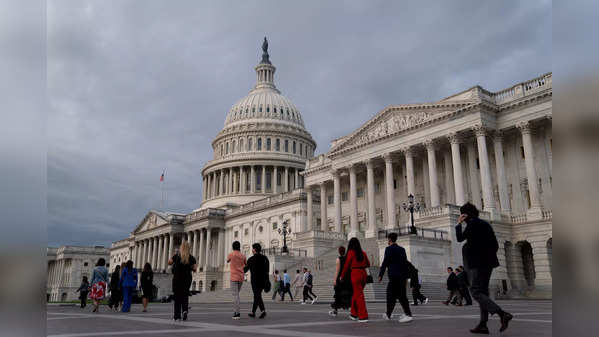What will happen if US govt is shutdown on September 30?

20-Sep-2023 08:09 PM
A government shutdown could lead to the unpaid furlough of numerous federal employees, causing potential disruptions in services such as passport processing and national park maintenance. While some essential workers would still be on the job without pay, services like mail delivery, tax collection, and US debt payments would continue as usual.
The United States is approaching a potential government shutdown in less than two weeks, with the situation becoming increasingly critical as lawmakers grapple to reach a consensus on a short-term spending bill. Lawmakers are facing a deadline of midnight on September 30 to reach a resolution, as funding for government services is set to expire. The government shutdowns jeopardize the financial stability of hundreds of thousands of employees who could be furloughed without pay, while national parks, museums, and other federal facilities are forced to close. Despite the prevailing desire among policymakers to avert this scenario, some backers aligned with former President Donald Trump have thus far opposed every proposed bill. Here is lowdown on possible shutdown of the US government: Why is there a possibility of govt shutdown? To keep government agencies functioning, Congress must allocate funding through various bills. If these bills are not passed before the start of the new fiscal year, these agencies face a halt in their normal operations. According to a Reuters report, there have been 14 government shutdowns since 1981, some lasting just a day or two. The most recent and longest shutdown occurred over 35 days between December 2018 and January 2019, primarily due to a disagreement over border security. In many cases, lawmakers extend the deadline temporarily by maintaining current funding levels through a "continuing resolution," allowing time for further negotiations. What are likely impacts of govt shutdown A government shutdown would result in the furloughing of hundreds of thousands of federal employees without pay, leading to potential disruptions in various services, such as passport processing and national park maintenance. Certain "essential" workers would continue to work but would also go unpaid. Services like mail delivery, tax collection, and US debt payments would remain active. Short shutdowns, especially those spanning a weekend, might have minimal practical effects. However, if federal employees miss paychecks after two weeks, the broader economy could suffer. According to Goldman Sachs, a shutdown directly reduces GDP growth by approximately 0.15 percentage points for each week it persists, but growth would recover by the same margin following the shutdown's resolution. As per the Goldman Sachs, while federal spending is equal to almost a quarter of gross domestic product, the impact of a shutdown is much smaller, for four reasons: 1. Only discretionary spending would be affected, about a quarter of federal outlays, because mandatory spending (on programs like Medicare and Social Security) runs automatically subject to rules Congress has established. 2. Only departments that Congress has not funded would shut down; while none of the dozen standard appropriations bills have passed to date, prolonged shutdowns have typically spared agencies such as the Department of Defense. 3. Shutdowns primarily affect the work of federal employees (federal pay amounts to roughly 2% of GDP), with little impact on investment or purchases of goods and services. 4. The majority of federal employees, roughly 65%, would continue working during a shutdown because the services they provide are likely to be deemed essential. The 2018-2019 shutdown cost the economy an estimated $3 billion, equivalent to 0.02% of GDP, according to the Congressional Budget Office, the Reuters report said.